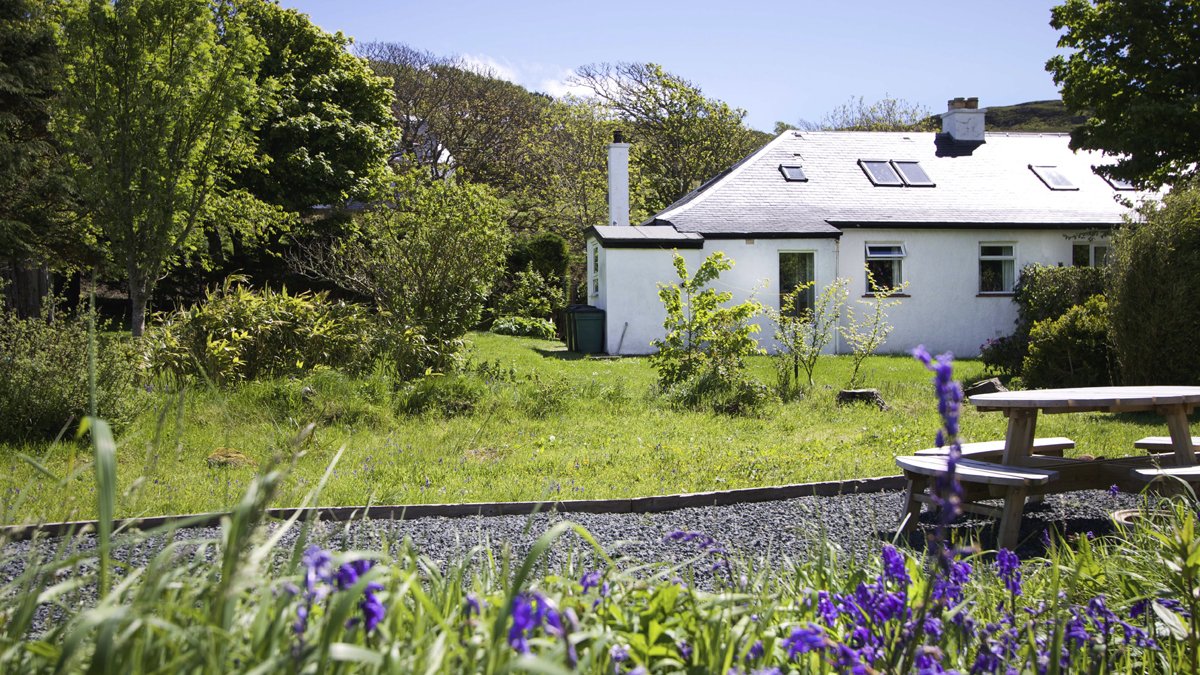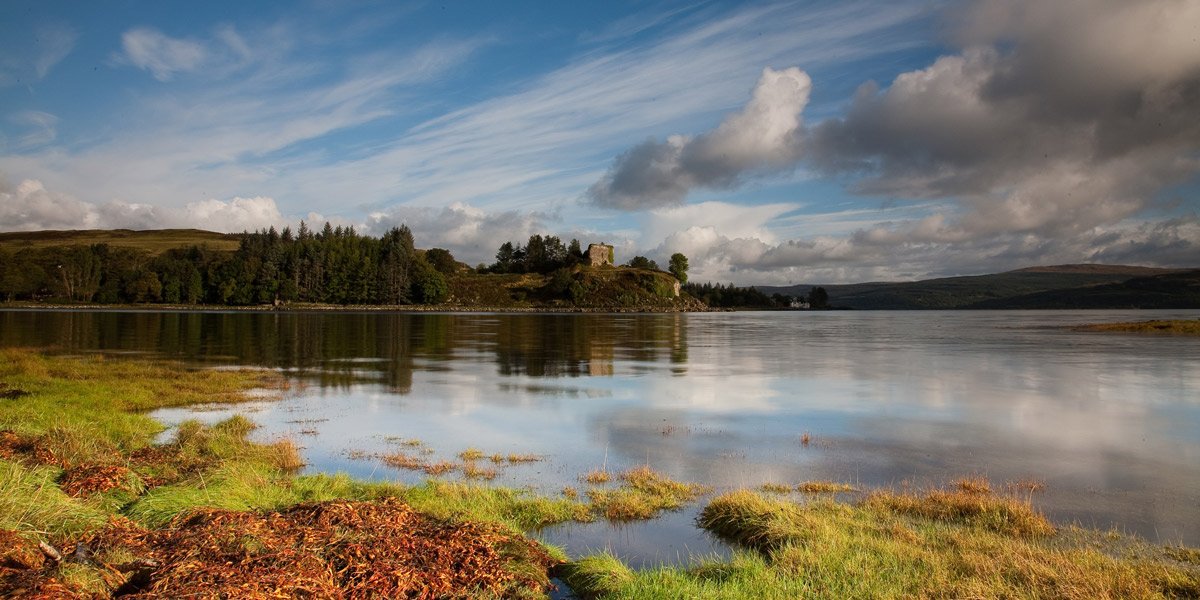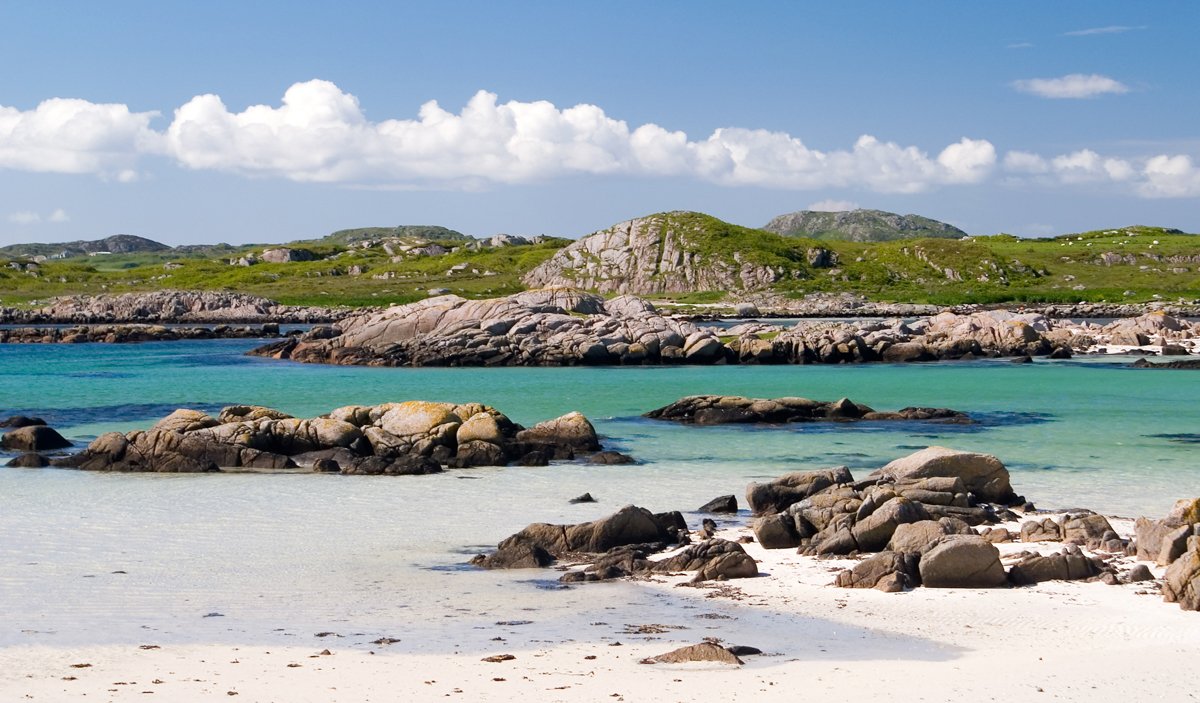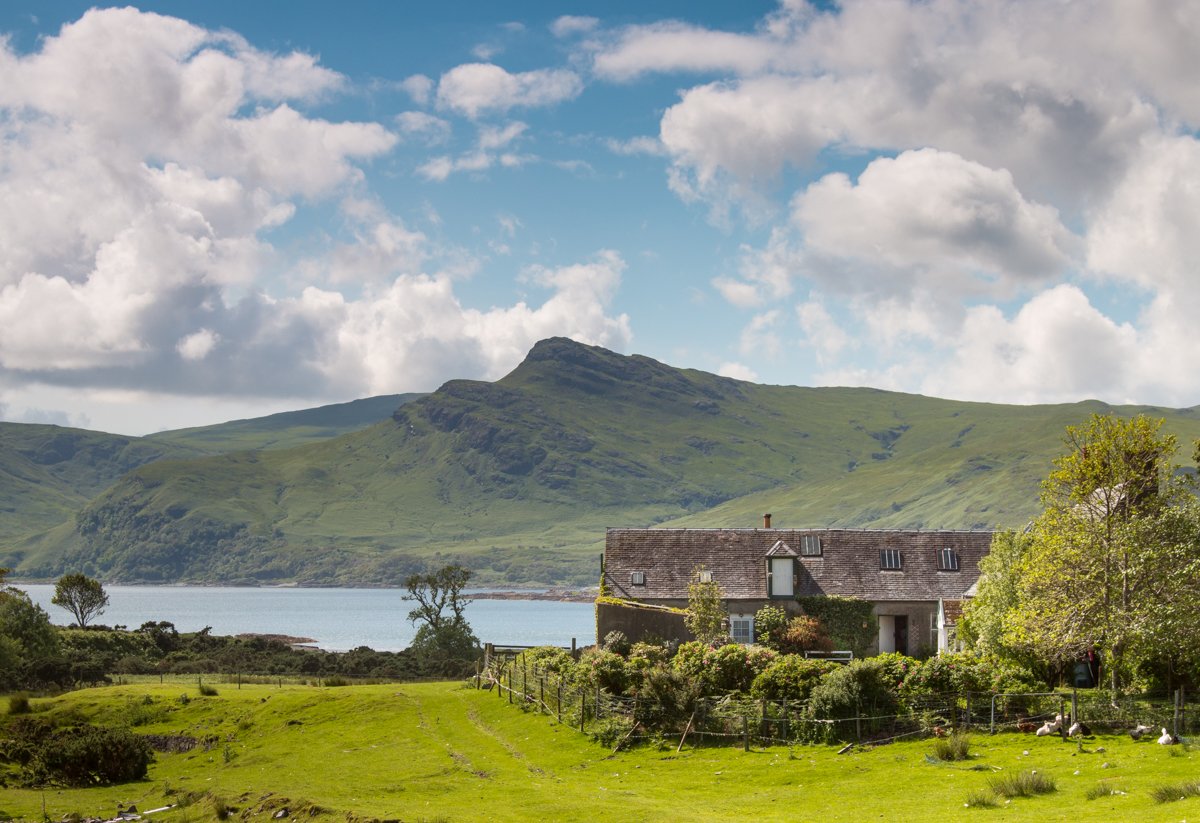The Isle of Mull and its neighbouring islands are rightly famous for their geology. These islands have a richness and complexity in their geological make-up that is quite remarkable, and features the grand phenomenon of columnar basalt. When the Survey officers were carrying out the geological survey of Mull and surrounding islands, in the early part of the 20th century, they quickly realised how complex an area it was that they were studying.
The rocks of Mull have played an enormous part in the advancement of the science of Igneous Petrology. Earth Scientists from all over the world come to study the amazing geology of this place. But you do not need to be a scientist to appreciate one of the truly remarkable geological wonders – the rock known as Columnar Basalt, which is on display in several places in these islands.
Most people will be familiar with pictures of Fingals Cave on Staffa or the Giant’s Causeway in Northern Ireland. These are both excellent examples of this strange rock formation which almost does not look ‘natural’. The mainly six-sided columns have a symmetry which is fascinating. So what is columnar basalt and where can it be seen on Mull?
Basalt is a type of lava that is very common throughout the world. Look at pictures of Hawaii and you will see lava pouring into the sea and forming great clouds of steam. That is basalt. The volcanoes in Iceland that caused such disruption to air traffic a few years ago were mainly basaltic. In fact Iceland today is very like how Mull would have looked 60 million years ago!
Not all basalt lava forms columns however – much of it is massive and uniform, lacking the pillar-like structure. There is a lot of variation in the basalt lava seen on Mull and the other islands. Some of it is very crumbly, a lot of it contains white crystals of a group of minerals called zeolites, and sometimes it can appear reddish in colour. The columnar form, which is easily the most visually spectacular, can be seen in lots of locations on Mull. Here are five areas for you to see some impressive examples of it during a visit.
1. Staffa
The Island of Staffa is the prime location for seeing basalt columns. No other location really matches it for grandeur. Whether seen from the boat or from the shore, it looks spectacular. The name Staffa comes from Norse and means “Pillar Island”. Very well named! Staffa is easy to access on foot but requires a boat trip to get to it. Find out more about how you can visit Staffa here.

Basalt columns on Staffa
2. Ulva
Ulva is an island just to the west of Mull and is accessible from Ulva Ferry by a small, regular boat service. The columns are on the south coast of the island, approximately 45 minutes from the slipway. The walking is easy and the columns are well sign-posted.

Columnar basalt on Ulva
3. Macculloch’s Tree (The Fossil Tree)
The famous Fossil Tree lies at the very western extremity of the Ardmeanach peninsula. It involves a long walk over rough terrain and the descent of a ladder to reach the shore. The scenery is spectacular and basalt columns can be seen near the tree and on the shore leading up to it. This is wild country where the rewards for the effort are great scenery and spectacular coastal views. Beyond the headland of Rubha na h-Uamha (Point of the Cave, and well-named so), there is more columnar basalt to be seen. Great care is needed as it can only be easily accessed when the tide is out.

The Fossil Tree
4. Carsaig Arches
This is another difficult to reach location, with a lot of rough walking and a need for a steady gait and a good head for heights. The Arches are at Malcolm’s Point, west of Carsaig itself. One of them forms a sea-stack. The other is a cave. Both are spectacular.

Carsaig Arches
5. Ardtun
Ardtun, near Bunessan, is famous for another geological find – fossil leaves, dating back 60 million years. The leaves are found in between lava flows, some of which are beautifully columnar. This is dramatic coastal scenery with ravines, a sea stack, caves and other delights. Many of the columns are curved or even horizontal. The approach is over extremely boggy ground, straightforward to walk but very wet underfoot. Care is required at the gorge of Slochd nan Uruisg (the defile of the goblin) where the leaf beds and the basalt columns are best seen.

Columnar basalt at Ardtun
There is lots of further reading available on the subject, should you wish to find out more about Mull’s geology. Mull in the Making by Ros Jones offers a great introduction.
Author: James Westland
All images copyright James Westland, 2016
If you’re intrigued by Mull’s magnificent landscapes, don’t miss our guide to visiting MacKinnon’s Cave.
If you’ve been to see the columnar basalt on Mull, what did you think?




















